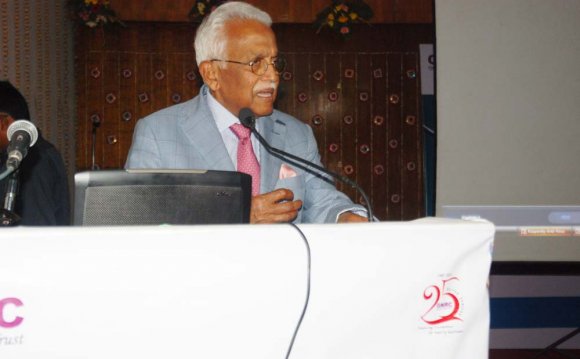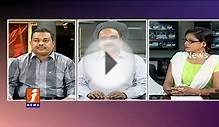
 CONFERENCE REPORT
CONFERENCE REPORT
Vaibhav Srivastava, Lisa Sullivan and Shwetal Sanghvi
1Insignia Communications, Mumbai, India
2Global Alliance for Medical Education, USA
Abstract
In today’s fast paced environment, continuing medical education (CME) and continuing professional development (CPD) play a pivotal role in enhancement of clinical practice and patient care. Getting updated with the latest trends and practices has gained utmost importance for today’s healthcare professional, be he or she a family physician, a specialist or a super specialist. In addition, the increased awareness of different diseases among the masses due to exposure to information from the media and Internet makes it vital for the healthcare provider to be aware of the latest knowledge and trends so that patients may be provided with the highest quality of treatment.
India today boasts of having the largest number of medical schools in the world with an annual student intake of over 50, 000 prospective medical professionals. CME in India is at a rudimentary stage in development, but definitely evolving at a rapid pace. Despite the best efforts of the major stakeholders, such as the Medical Council of India (MCI), medical societies, educational institutions and key opinion leaders (KOLs) in the field, the CME scenario in India fails to have a systematic and integrated approach to match international standards. There is a huge need gap because the legislation to make CME mandatory has made little progress. One of the many reasons is that each state in India has its own individual norms, and without a federal system there exists no national guideline for appropriate specialty learning that practising doctors require as part of CPD. There is an unmet need for the provision of the right CME for the right doctor group at the right time to create appropriate learning levels. Therefore CME providers in India need guidance to navigate through rough waters with a multi-modal unbiased approach to bring together the needs of the Indian doctors and the needs of the patient population on a common platform.
This report summarises the presentations and discussions that took place during the first regional meeting of The Global Alliance for Medical Education (GAME) in India on 18 October 2014 in Mumbai. The predominant participants and panel members included representatives from the MCI, medical education institutions, pharmaceutical industries and private sector providers of CME programmes. The conference was organised with the aim of bringing all the major CME stakeholders from India and CME global experts under one roof to discuss the challenges and possible solutions for the expansion of CME/CPD in India.
 With this motive as the primary focus of the meeting, eminent speakers and panellists attempted to identify region-specific issues in implementing legal and regulatory frameworks for CME. The group of experts attempted to identify ways to implement standards of good practice, so that the Indian doctor could match his/her international peers. The role of industry and that of private medical education providers was also discussed at length given their major presence in the country.
With this motive as the primary focus of the meeting, eminent speakers and panellists attempted to identify region-specific issues in implementing legal and regulatory frameworks for CME. The group of experts attempted to identify ways to implement standards of good practice, so that the Indian doctor could match his/her international peers. The role of industry and that of private medical education providers was also discussed at length given their major presence in the country.
Keywords: CME/CPD, India, GAME, revalidation, medical education
Journal of European CME (JECME) 2015. © 2015 Vaibhav Srivastava et al. This is an Open Access article distributed under the terms of the Creative Commons Attribution 4.0 International License, allowing third parties to copy and redistribute the material in any medium or format and to remix, transform, and build upon the material for any purpose, even commercially, provided the original work is properly cited and states its license.
Citation: Journal of European CME 2015, : 27499 -
Vaibhav Srivastava (Programme Director, Director – Insignia Communications, GAME member) presented the welcome address on behalf of Global Alliance for Medical Education (GAME) and the organising team. He began his talk with a brief description of the current continuing medical education (CME)/continuing professional development (CPD) scenario in the Indian subcontinent and the global face of GAME in the field of CME and his privilege to be a part of the organisation.
He emphasised that although the idea of CME has taken root in the country, it continues to face troubled waters in the implementation and integration into the current education system, in order to encourage voluntary participation of the target audience. Lack of a structured and integrated medical education curriculum, non-uniformity in rules for mandatory CME credits, differences in standards of CME accreditation across the states, confusion on the recognition status of online CME and funding policies are some of the hindrances faced in structuring policies and executing CME programmes for the healthcare profession.
He said the purpose of organising this meeting was to bring all the major CME stakeholders in India on to a common platform along with global experts to discuss expansion of CME/CPD. Unlike other countries such as the US and much of Europe, India fails to have a structured methodology for CME programme implementation and recognition in place. In addition to major stakeholders such as the MCI, medical societies, educational institutions and KOLs, he highlighted the pivotal role played by the pharmaceutical industry in helping shape the development of the CME system in India. He said that unlike the rest of the world, the biggest and strongest participation in CME growth and development in India happens to come from the pharmaceutical industry.
RELATED VIDEO












